News

WASHINGTON, Dec. 31, 2013 – U.S. Special Operations Command is using unprecedented outreach and collaboration to develop what its commander hopes will be revolutionary capabilities: a suit that’s been likened to the one worn by the “Iron Man” movies superhero that offers operators better protection, enhanced performance and improved situational awareness.
Read The Article
This was the year that the FDA handed down its final guidance on mobile medical apps to perhaps more questions than it answered.
The omnibus HIPAA Final Rule on Privacy & Security officially kicked in, as data breaches triggered by lost or stolen mobile devices continued, including one involving a cloud service. And telemedicine gained purchase in the so called "Wild West."
Read The Article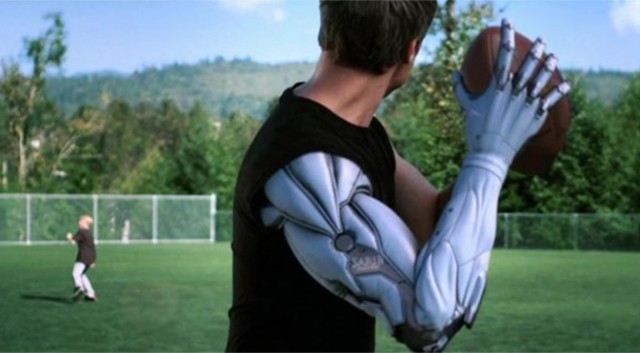
Super-material could create robot muscles with 1000x human strength
23 December, 2013When you flex a muscle in your arm, it’s not the muscle that’s shrinking, but the cells that comprise it. Each cell lining the muscle’s length has its own limited contractile ability, one driven by tiny motor and ratchet proteins that crumple up a cell and refuse to let it relax. Rather than being a single continuous muscular action, your bicep contracts as a result of millions of tiny, discreet contractions all working in concert. That being the case, it’s always been something of a misnomer to refer to robot muscles as muscles, per-se — despite being visually similar, they are really just servos, or hydraulic pumps, or whatever else. This week marks the first proof of concept for an attempt to change that, to make usefully strong artificial muscles that actually work like muscles — with all the advantages and disadvantages that come with it.
Read The Article
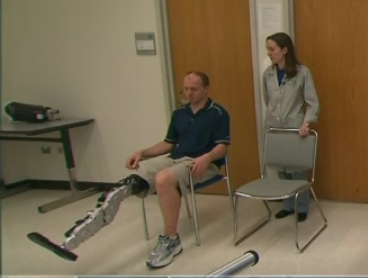
Doctors hope to make so called "smart" prostheses available to patients, including Iraq war amputees, in about 3-5 years.
Read The Article

Scripps Health is studying whether wireless wrist monitors can be used in a hospital to collect and monitor vital signs from patients.
The San Diego-based health system is using ViSi Mobile wristbands, developed by Sotera Wireless, on as many as 30 patients in one of the medical-surgical units at Scripps Green Hospital in nearby La Jolla. The FDA-approved devices measure electrocardiogram (ECG), heart rate, pulse, blood pressure, blood oxygenation and skin temperature, continuously displaying the data on a small screen and relaying the data to a nursing station, where the information is monitored in real-time through an online dashboard.
Read The Article

A group of researchers from the UK have used inkjet printing technology to successfully print cells taken from the eye for the very first time.
The breakthrough, which has been detailed in a paper published today, 18 December, in IOP Publishing's journal Biofabrication, could lead to the production of artificial tissue grafts made from the variety of cells found in the human retina and may aid in the search to cure blindness. Read The Article
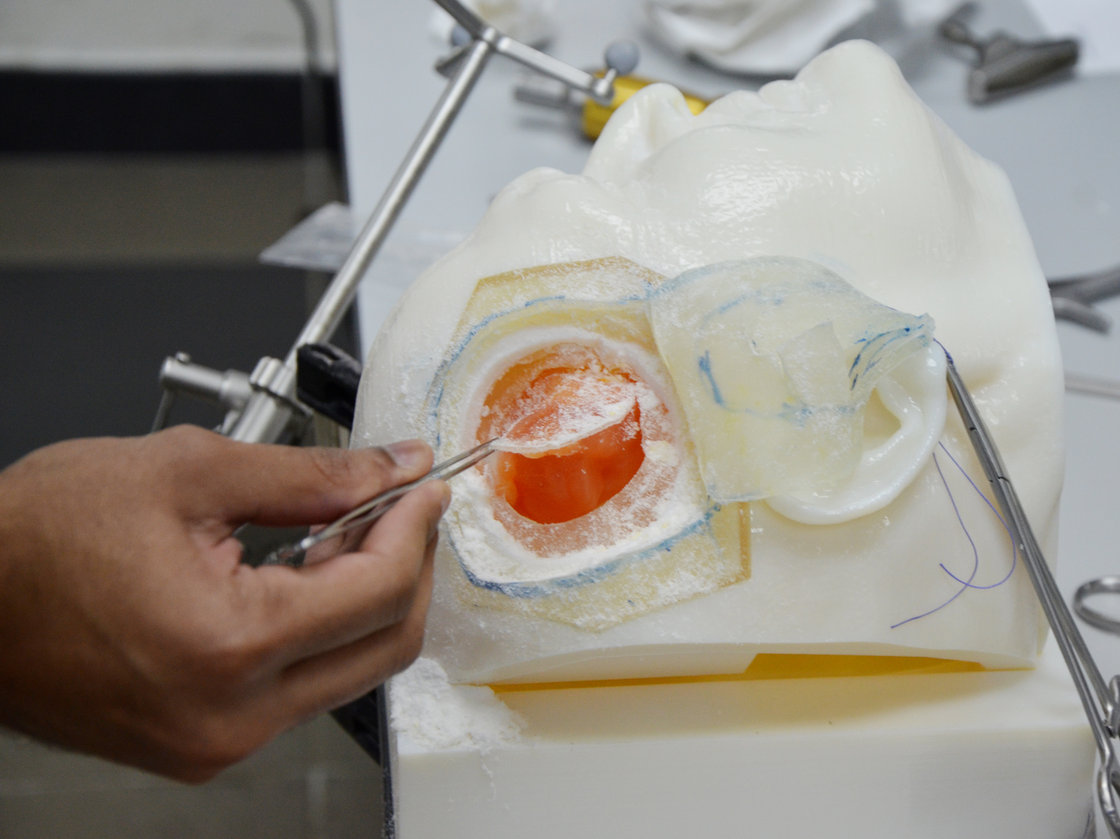
There's no such thing as too much practice when it comes to brain surgery. But it's hard for beginner neurosurgeons to get real hands-on experience. Most residents learn by watching and assisting experienced surgeons.
Newbies can practice on cadavers or use simulators, of course. But neither of those alternatives is quite the same as operating on a real, live patient, for better and for worse.
Read The Article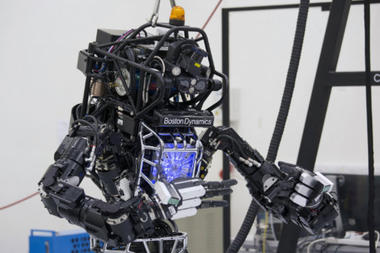
They say that a dog is a man’s best friend. So does that make BigDog, Boston Dynamic’s four-legged robot, the best friend of Meka Robotics’ humanoid robot?
The answer lies with Google. The tech company recently acquired robotics company Boston Dynamics. This is Google’s eighth robotics acquisition in the past six months (one of which was Meka Robotics, a company that develops human-like robot parts), according to the New York Times. Boston Dynamics, however, offers a bit of a different breed to Google’s growing bot-based portfolio.
Read The Article

As you might already know, playing Wii Fit is a funny thing. It feels kind of like cheating—because aren’t I supposed to be grunting it out at the gym or something?—but it is also genuinely fatiguing. Now a new study suggests it’s no cop-out. In a randomized controlled trial, older adults with type 2 diabetes had better controlled blood sugar after playing Wii Fit Plus for half an hour a day, every day, for 12 weeks.
Read The Article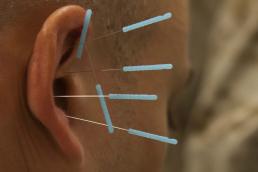
CAMP LEATHERNECK, Afghanistan – Strange isn’t quite the right word for some of the treatments received by Marines and sailors who visit the combined aid station here. The tiny needles protruding from their ears, elbows and feet, a telltale sign of acupuncture, are an unorthodox scene in a military medical facility.
For several months, Navy Lt. Orlando Cabrera, a physician and medical acupuncturist, has been treating everything from combat trauma to sore shoulders and anxiety with his unique set of medical skills.
Read The Article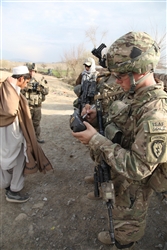
WASHINGTON, Dec. 11, 2013 – For the first time in any war, U.S. soldiers on foot patrol across Afghanistan can use secure mobile handheld devices and infantry-tailored apps to access digital maps, set up and share routes, execute sudden mission changes and store critical information for use back inside the wire.
Read The Article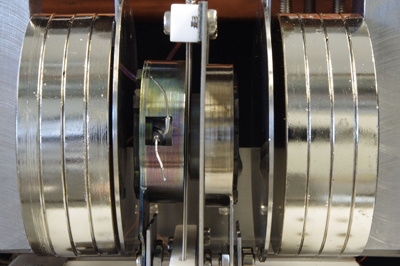
A new type of thermionic generator that turns heat or light into electrical energy has been developed by researchers in Germany and the US. The new design overcomes the "space-charge problem" that has plagued previous attempts at developing practical devices. The device is about four times more efficient than previous generators and the new technology could find use in a range of applications including solar power and the harvesting of waste heat.
Read The Article
While mHealth technology may be saving lives in places like Africa and the Caribbean, in Europe, Asia and Australia the results aren't so dramatic. Healthcare is already an established industry there, and the adoption of mHealth tools and services is following a more gradual path. The emphasis there is on improving lives and healthcare management, rather than preventing a stillborn death or heading off a malaria epidemic.
Read The Article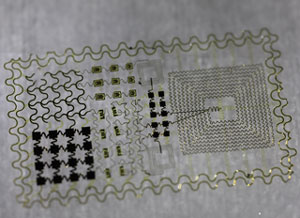
It is likely that at your next visit to the doctor, a medical practitioner will start by taking your temperature. This has been part of medical practice for so long that we may see it as antiquated, with little value. However, the routine nature of the ritual belies the critical importance of obtaining accurate body temperature to assess the health of a patient. In fact, subtle variations in temperature can indicate potentially harmful underlying conditions such as constriction or dilation of blood vessels, or dehydration. Even changes in mental activity, such as increased concentration while solving a mathematical equation, are accompanied by measureable changes in body temperature.
Read The Article
There have been remarkable mechanical advances in prosthetic limbs in recent years, including rewiring nerve fibers to control sophisticated mechanical arms (see “A Lifelike Prosthetic Arm”), and brain interfaces that allow for complicated thought control (see “Brain Helps Quadriplegics Move Robotic Arms with Their Thoughts”). But for all this progress, prosthetic limbs cannot send back sensory information to the wearer, making it harder for them to do tasks like pick up objects without crushing them or losing their grip. Read The Article
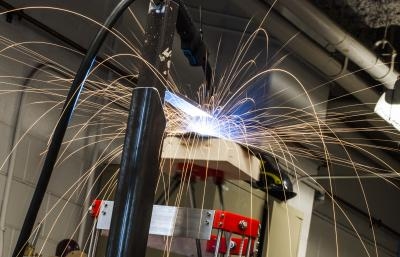
OK, so maybe you aren't interested in making your own toys, cellphone cases, or glow-in-the-dark Christmas decorations. How about a brake drum?
Until now, 3D printing has been a polymer affair, with most people in the maker community using the machines to make all manner of plastic consumer goods, from tent stakes to chess sets.
Read The Article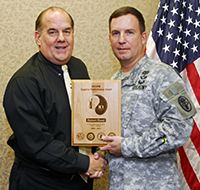
Robert, who is our senior Program Manager and G.O.R. for the Pain Projects was formally and officially recognized and presented the "Superior Performance Award" on Thursday, 24 OCT., in Rockville, Md.
Given by Colonel Chester C. (Trip) Buckenmaier III, MC. COL Buckenmaier serves as the Principal Investigator of three of the TATRC managed pain projects.
Read The Article
WASHINGTON, Oct. 18, 2013 – U.S. Special Operations Command wants its operators to be protected with what it informally calls an “Iron Man suit,” named after the fictional superhero.
In September, Socom announced it is seeking proposals for prototypes of the Tactical Assault Light Operator Suit, or TALOS.
Read The Article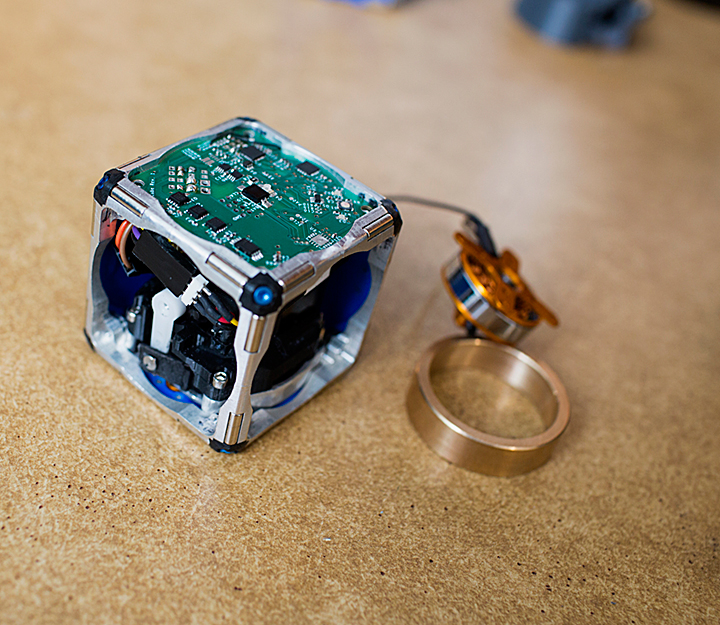
They're called M-Blocks and the tiny, cubical robots that can spin, flip and jump their way into new configurations are the brainchild of scientists at the Massachusetts Institute of Technology.
According to MIT's Computer Science and Artificial Intelligence Laboratory (CSAIL), M-Blocks:
Read The Article"[are] cubes with no external moving parts. Nonetheless, they're able to climb over and around one another, leap through the air, roll across the ground, and even move while suspended upside down from metallic surfaces.

Oct. 4, 2013 — Small cubes with no exterior moving parts can propel themselves forward, jump on top of each other, and snap together to form arbitrary shapes.
In 2011, when an MIT senior named John Romanishin proposed a new design for modular robots to his robotics professor, Daniela Rus, she said, "That can't be done."
Read The Article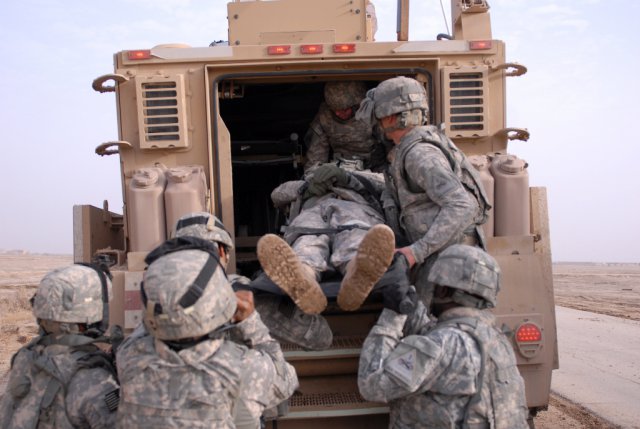
FORT DETRICK, Md. (Oct. 1, 2013) -- The terrain in Afghanistan is tough. Drivers face roads that wind down treacherous hillsides with hairpin turn after hairpin turn, sandy valleys between tree-spotted ranges, snow-chilled mountains and plains, mud from snowmelt, narrow passes filled with boulders, and rivers, and more mud. Add in extremes of temperature, the danger of flash flooding and earthquakes, and the expectation of unexploded land mines and improvised explosive devices. Add in sniper gunfire, heavy artillery, and wounded warriors. The U.S. Army Medical Research and Materiel Command's Medical Materiel Development Activity, Medical Support Systems Project Management Office, or USAMMDA MSS PMO, works with military, government and industry partners to improve equipment and evacuation capabilities, giving minutes back, saving lives.
Read The Article
Army scientists at the Edgewood Chemical Biological Center (ECBC) and academic collaborators are conducting research on organoids (small swatches of human tissue) on microchips. The center will be collaborating with the U.S. Army Medical Research Institute of Chemical Defense, Wake Forest, Harvard, and the University of Michigan on the chip design.
Read The Article
A $75 million Department of Defense grant to improve technologies to treat soldiers injured on the battlefield and advance care for the public will involve bioengineers at Rice University and the University of Texas Health Science Center at Houston (UTHealth).The five-year Armed Forces Institute of Regenerative Medicine (AFIRM) grant announced today by the lead institution, the Wake Forest University School of Medicine, continues a program that began in 2008. Through AFIRM-II, researchers at Rice led by Antonios Mikos, a pioneer in the field of tissue engineering, and Kurt Kasper, a Rice faculty fellow in bioengineering, expect to advance the art of craniofacial reconstruction. The grant funds research at more than 45 academic institutions and industry partners.
Read The Article
The Armed Forces Institute for Regenerative Medicine (AFIRM) will continue its efforts to apply the latest in tissue engineering and other regenerative medicine techniques to the treatment of battlefield injuries in a $75 million, five-year second phase. "When warriors come back from the battlefield with serious life-changing injuries, it is our job to find new and innovative ways to help them. Ultimately, we'd like to create new treatments to repair these severe injuries as if they never happened," said Maj. Gen. Joseph Caravalho Jr., commanding general of the U.S. Army Medical Research and Materiel Command and Fort Detrick.
Read The Article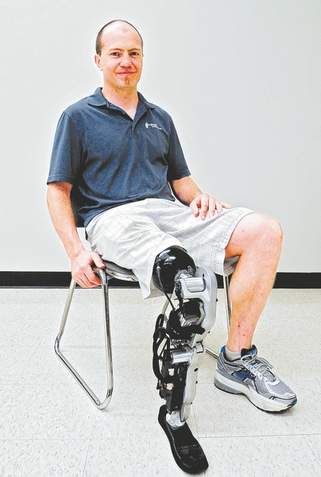
Zac Vawter, a software engineer who lives in the Seattle area, already knew about advances in bionic technology when a motorcycle wreck led to the amputation of his right leg just above the knee in 2009. Four years and an $8 million grant from the U.S. Army’s Telemedicine and Advanced Technology Research Center later, Vawter is considered the “test pilot" of the bionic leg that can tackle slopes, stairs and in-chair movement markedly better than existing devices.
Read The Article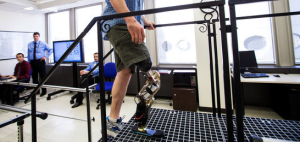
It may surprise some that while there's been a growing multitude of thought-controlled bionic arms and thought-controlled bionic hands on the market for some time now for amputees, amputees who lost part or all of a leg are still forced to get by with old fashioned prostheses. The RIC team took four years to develop the robotic limb, and the cost was $8M USD, financed through a grant from the U.S. Army’s Telemedicine and Advanced Technology Research Center (TATRC).
Read The Article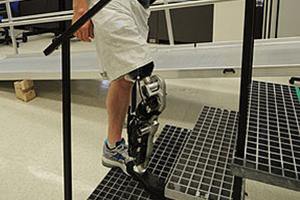
Defense Department and academic researchers are hailing a significant breakthrough in the development of a mind-controlled bionic leg.
“We hope to … make this robust enough to send home with people for trial in three to five years,” said Levi Hargrove, a biomedical engineer and research scientist at the Rehabilitation Institute of Chicago. “After that, if it gets more funding, to have veterans at Walter Reed or San Antonio testing them.”
Read The Article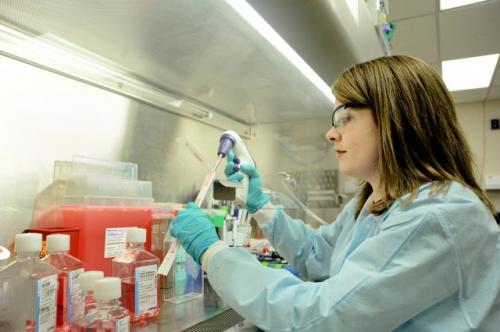
There was a time when the thought of manufacturing organs in the laboratory was science fiction, but now that science is a reality. Army Scientists at the Edgewood Chemical Biological Center and academia collaborators have been conducting research of "organs" on microchips. ECBC is one of a few laboratories in the world conducting this research effort, but what sets ECBC apart is that its research will directly impact the warfighter.
While the center will be collaborating with the U.S. Army Medical Research Institute of Chemical Defense, Wake Forest, Harvard and the University of Michigan on the design of the chip, the testing will take place at ECBC.
Read The Article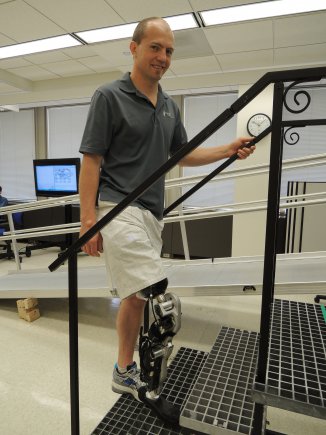
Researchers unveiled the world's first thought-controlled bionic leg Sept. 25, funded through the US Army Medical Research and Materiel Command's (USAMRMC) Telemedicine and Advanced Technology Research Center (TATRC) and developed by researchers at the Rehabilitation Institute of Chicago (RIC) Center for Bionic Medicine.
The New England Journal of Medicine highlighted the project that marked a milestone for prosthetics. Until now, this type of technology was only available for arms. While the bionic legs aren't for sale yet, researchers are hoping they may be available commercially in as little as five years.
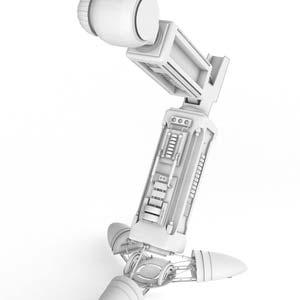
Redirecting nerves from the thigh muscle to control an experimental robotic leg makes it easier to use and more like a natural leg, researchers report.
The leg's movements are guided by the patient's original nerves, which have been redirected to a small area of the thigh muscle. The robotic leg senses the unconscious muscle movements and translates them into movements for the knee and ankle of the 4.5kg device.
Read The Article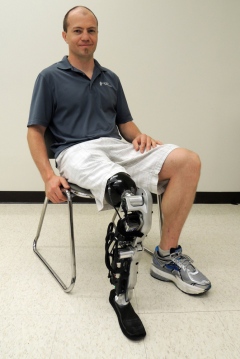
CHICAGO—Zac Vawter’s right leg weighs about 10 pounds, slightly less than his left. But it works normally; he doesn’t have to do much more than think to rotate his ankle, walk or climb stairs.
Rather than tissue and bone, the 32-year-old amputee’s right leg is a prosthetic made of aluminum, two motors, sensors and a powerful computer system.
Read The Article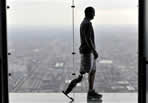
After losing his lower right leg in a motorcycle accident four-and-a-half years ago, 32-year-old Zac Vawter has been fitted with an artificial limb that uses neurosignals from his upper leg muscles to control the prosthetic knee and ankle. The motorized limb is the first thought-controlled bionic leg, scientists at the Rehabilitation Institute of Chicago reported Wednesday in The New England Journal of Medicine.
"This is a groundbreaking development," says lead author Levi Hargrove, a biomedical engineer and research scientist at RIC. "It allows people to seamlessly transition between walking along level ground and going up and down stairs and slopes."
Read The Article
Zac Vawter, a software engineer who lives in the Seattle area, already knew about advances in bionic technology when a motorcycle wreck led to the amputation of his right leg just above the knee in 2009.
As doctors at Harbor View Medical Center in Seattle battled for three days to try to save his leg, Vawter asked about the method that uses the mind to move a prosthetic limb. The technology had previously been used only in arms.
Read The Article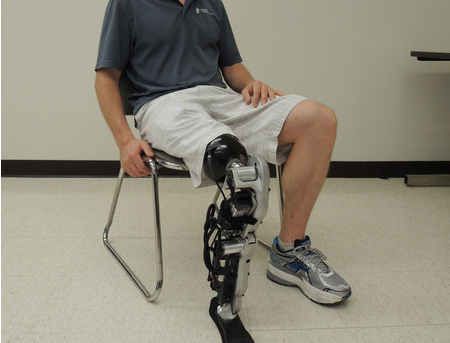
A new type of prosthetic technology![]() establishes a connection between a robotic leg and a patient’s original nerves. By sensing unconscious muscle activity, the bionic leg can mimic natural movements of the knee and ankle. According to the developers, the innovation allows users to achieve an unprecedented degree of control.
establishes a connection between a robotic leg and a patient’s original nerves. By sensing unconscious muscle activity, the bionic leg can mimic natural movements of the knee and ankle. According to the developers, the innovation allows users to achieve an unprecedented degree of control.

Sept. 26 (Bloomberg) -- Zac Vawter, a software engineer who lives in the Seattle area, already knew about advances in bionic technology when a motorcycle wreck led to the amputation of his right leg just above the knee in 2009.
As doctors at Harbor View Medical Center in Seattle battled for three days to try to save his leg, Vawter asked about the method that uses the mind to move a prosthetic limb. The technology had previously been used only in arms.
Read The Article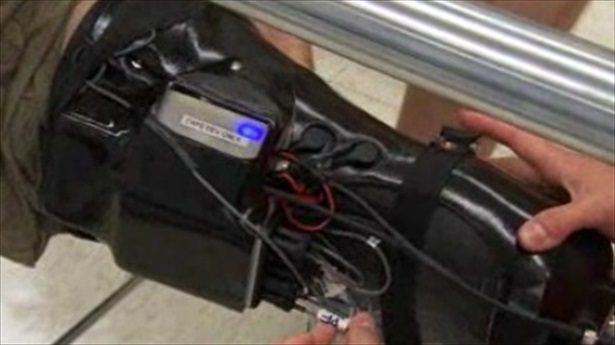
After almost four years of testing, a Washington state man is closer to being able to use a prosthetic leg that responds to his body’s commands.
“Compared to my everyday leg, this ‘bionic leg,’ or the neural prosthetic is dramatically beyond my normal leg,” Zac Vawter told NBC News in a report published on Wednesday. “In terms of how it transitions from walking to stairs and sitting and standing and how it helps me move around and puts energy into the motion, it’s really a dramatic difference over my normal prosthetic.”
Read The Article
CHICAGO, Sept. 25, 2013 /PRNewswire/ -- The science of bionics helped the more than 1 million Americans1 with leg amputations take a giant step forward, as the Rehabilitation Institute of Chicago (RIC) revealed clinical applications for the world's first thought-controlled bionic leg in this week's New England Journal of Medicine. This innovative technology represents a significant milestone in the rapidly-growing field of bionics. Until now, only thought-controlled bionic arms were available to amputees.
Read The Article
BETHESDA, Md., Sept. 23, 2013 – The Center for the Study of Traumatic Stress at the Uniformed Services University of the Health Sciences here has just published a new book titled, “Disaster, Disease and Distress: Resources to Promote Psychological Health and Resilience in Military and Civilian Communities.”
Read The Article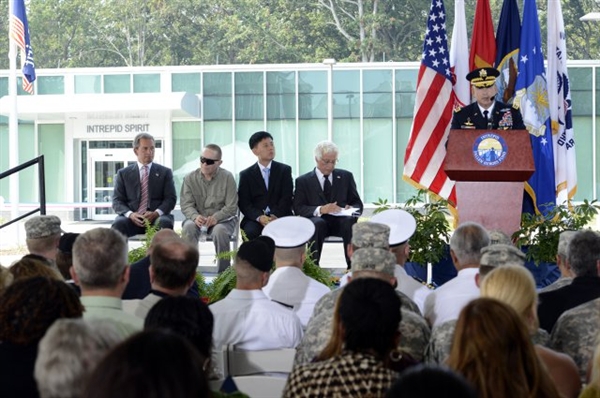
FORT BELVOIR, Va., Sept. 12, 2013 – Since the 9/11 terrorist attacks 12 years ago, more than 2.5 million U.S. troops have deployed to Iraq and Afghanistan, and over that same period, more than 260,000 service members have been diagnosed with the invisible wounds of traumatic brain injury and post-traumatic stress as a result of combat-related injuries and accidents. Read The Article

WASHINGTON, Aug. 16, 2013 – Of the many military medical advances that have resulted during the wars in Iraq and Afghanistan, one breakthrough has been in the treatments for burn patients, according to military and civilian medical experts attending a Defense Department-sponsored conference held in Fort Lauderdale, Fla.
Read The Article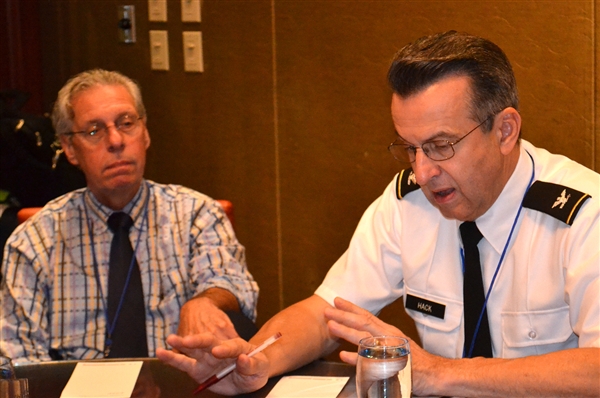
FORT LAUDERDALE, Fla., Aug. 15, 2013 – Experts from the Department of Defense and the Department of Veterans Affairs gathered here yesterday to discuss the future of veterans’ mental health and traumatic brain injury research efforts at the Military Health System Research Symposium.
Read The Article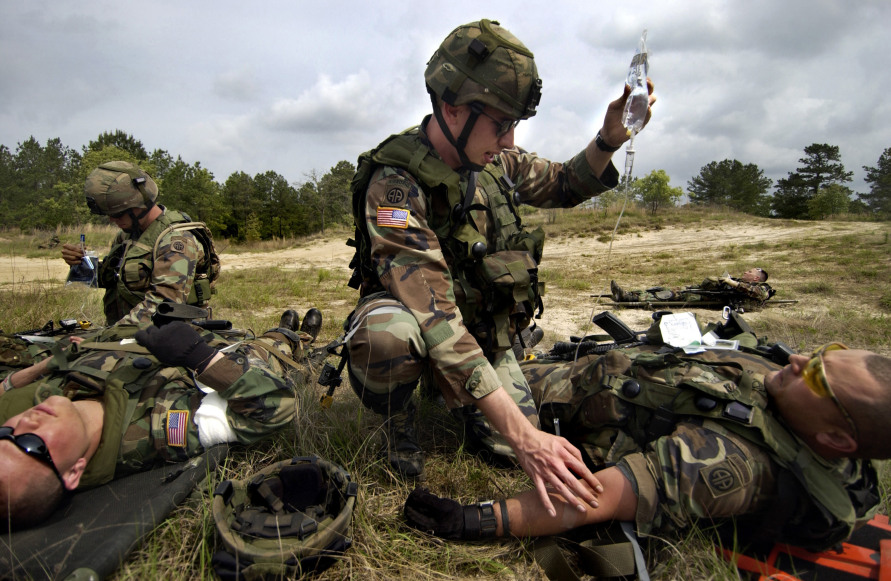
The U.S. Military, and particularly military medicine, is once again leading the way. Going back to Dr. Walter Reed, the famous U.S. Army pathologist and bacteriologist who proved that yellow fever is transmitted by mosquito bite, military medicine has always been focused on saving lives both on and off the battlefield. Today, military medicine has carried on the tradition of Dr. Walter Reed and is once again leading the way with a focus on the latest advancements in everything from traumatic brain injury (TBI), post-traumatic stress disorder (PTSD), and regenerative medicine, to radiation protection therapy, hemorrhage reduction, and countermeasures for new strains of infectious disease, including pandemics and bioterrorism. Yes, military docs have always been about taking care of the combat-wounded, as well as helping them to make sure they have the best rehabilitative care possible after the fight and continue to do so. The numerous medical advancements they have made have also had a dramatic, positive impact on civilian healthcare as well.
Read The Article
In response to President Obama’s Executive Order, the Departments of Defense (DoD) and Veterans Affairs (VA) highlighted today the establishment of two joint research consortia, at a combined investment of $107 million to research the diagnosis and treatment of post-traumatic stress disorder (PTSD) and mild traumatic brain injury (mTBI) over a five-year period.
Read The Article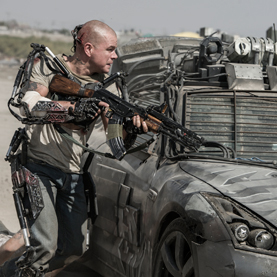
In the world of 2154 the divide between rich and poor has been actualized in space—literally. In the ultimate gated community the wealthy and powerful shelter on a ring-world space station dubbed Elysium, enjoying the best in health care, among other perks, as everyone else suffers below on the overpopulated and environmentally trashed Earth. Protecting that privilege requires sometimes superhuman abilities—hence the use of special exoskeleton strength suits that enhance fight or flight.
Read The Article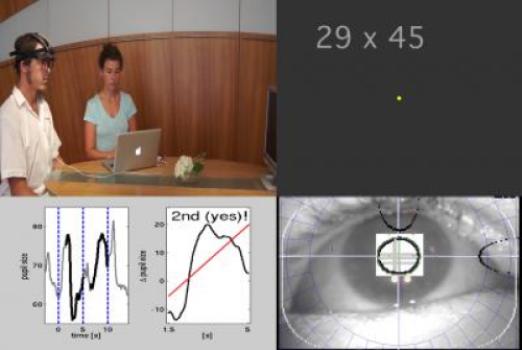
Patients who are otherwise completely unable to communicate can answer yes or no questions within seconds with the help of a simple system -- consisting of just a laptop and camera -- that measures nothing but the size of their pupils. The tool, described and demonstrated in Current Biology, a Cell Press publication, on August 5 takes advantage of changes in pupil size that naturally occur when people do mental arithmetic. It requires no specialized equipment or training at all.
Read The Article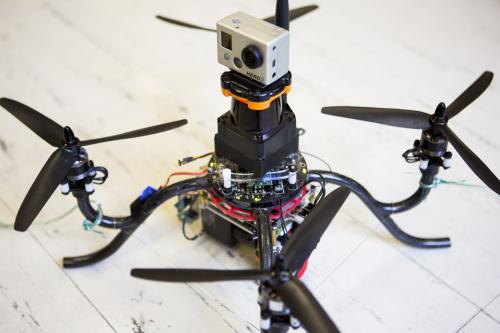
If the mission sounds impossible, that's because it is—at least with today's technology: Build a three-pound flying machine that can, under its own control, take off, fly through a window into a model building, avoid security lasers, navigate the halls, recognize signs, enter the correct room, find a flash drive in a box on a desk, pick it up, leave a decoy, exit and land in under 10 minutes.
Read The Article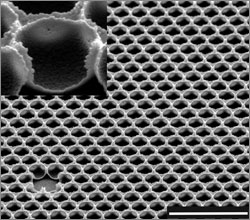
A new transparent, bioinspired coating makes ordinary glass tough, self-cleaning, and incredibly slippery, a team from the Wyss Institute for Biologically Inspired Engineering at Harvard University and Harvard School of Engineering and Applied Sciences (SEAS) reported online in the July 31 edition of Nature Communications.
The new coating could be used to create durable, scratch-resistant lenses for eyeglasses, self-cleaning windows, improved solar panels, and new medical diagnostic devices, said principal investigator Joanna Aizenberg, Ph.D., who is a Core Faculty Member at the Wyss Institute, Amy Smith Berylson Professor of Materials Science at SEAS, and a Professor of Chemistry and Chemical Biology.
Read The Article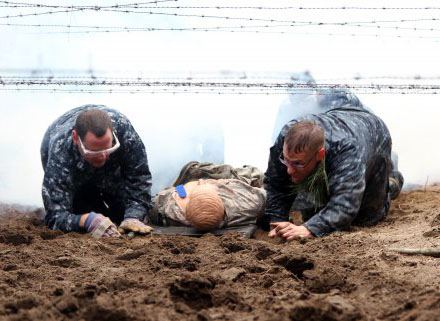
FORT DRUM, N.Y. -- It's almost too realistic -- the darkness, smoke, flashing lights, yelling, bodies strewn across the ground, blood -- all used in a facility on Fort Drum that trains military medical professionals for combat emergencies.
Fort Drum's Bridgewater-Vaccaro Medical Simulation Training Center, or MSTC, has trained thousands of medics and Soldiers in the Northeast. The intense training also is available to deploying surgeons, federal health care providers and members of joint service agencies who wish to attend.
Read The Article
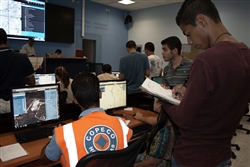
WASHINGTON, July 24, 2014 – The Defense Department is using geospatial, or mapping, technology in a tool that will soon be available to assist countries and organizations dealing with the deadly consequences of hurricanes, earthquakes and other disasters and humanitarian crises, experts from DoD and U.S. Southern Command said in a recent DoD News interview.
The open-source software is called GeoSHAPE, which stands for geospatial tool for security, humanitarian assistance and partnership engagement, Elmer L. Roman said.
Read The Article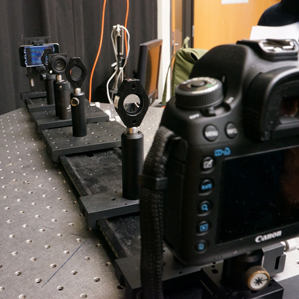
Those of us who need glasses to see a TV or laptop screen clearly could ditch the eyewear thanks to a display technology that corrects vision problems.
The technology uses algorithms to alter an image based on a person’s glasses prescription together with a light filter set in front of the display. The algorithm alters the light from each individual pixel so that, when fed through a tiny hole in the plastic filter, rays of light reach the retina in a way that re-creates a sharp image. Researchers say the idea is to anticipate how your eyes will naturally distort whatever’s onscreen—something glasses or contacts typically correct—and adjust it beforehand so that what you see appears clear.
Read The Article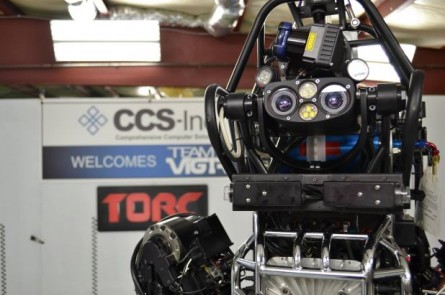
Apparently the DARPA competition to build a humanoid robot is going so swimmingly that the Defense Department’s advanced research wing is pushing back the schedule — not the usual reason for a missed deadline at the Pentagon.
The Defense Advanced Research Project Agency’s DARPA Robotic Challenge is focused on humanoid robots that could assist in disaster missions. Bryant Jordan helpfully writes, “If there is also a weaponized version a la The Terminator anywhere in the plan the Pentagon has not said so.”
Read The Article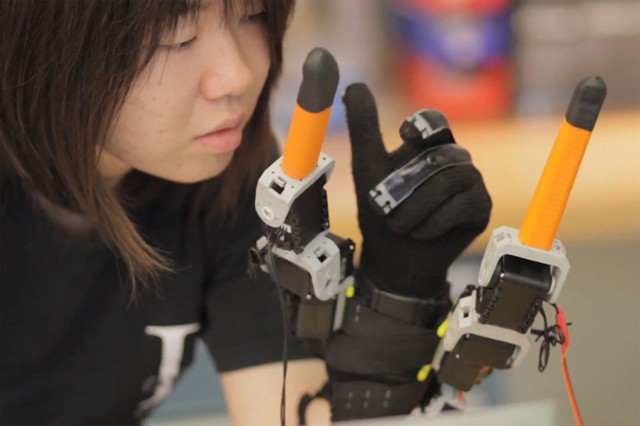
Four fingers and a thumb on each hand is pretty useful. Humans have gone from caves to sprawling cities in part because of our dexterous digits.
But researchers at MIT think we could do even better if we had an upgrade. They have developed a glove with two extra robotic fingers that respond intelligently to your movements, allowing you to perform two-handed tasks with just one robot-enhanced hand.
Read The Article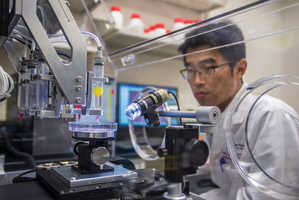
FORT DETRICK, Md. - A team of scientists scans the surface of severely burned skin, creates a three-dimensional map of the wound with a laser, and then prints skin cells onto the patient using a 3-D bioprinter.
Medical specialists are developing methods to transition this research from the laboratory to clinical trials.
Read The Article
WASHINGTON, July 15, 2014 – The Defense Advanced Research Projects Agency is working to develop wireless, implantable brain prostheses for service members and veterans who suffer memory loss from traumatic brain injury.
Called neuroprotheses, the implant would help declarative memory, which consciously recalls basic knowledge such as events, times and places, DARPA officials said.
Read The Article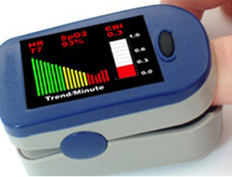
Battlefield medics and emergency responders have seen it before: a patient with no visible wounds suddenly goes into shock from internal bleeding.
At that point, no matter how fast medical personnel respond, “the patient can still die,” said Lt. Col. Will Smith, an emergency medicine physician in the Army Reserve. By the time a patient “crashes,” or goes into shock, the body has difficulty keeping the brain and heart functioning. Early recognition and treatment of shock is paramount to saving the life of a patient with internal injuries, he said.
Read The Article
Army Medicine is committed to reaching beneficiaries where they live. The Performance Triad application (v1.0) is now available to do just that.
Members of the U.S. Army Public Health Command, the Performance Triad Team at the Office of the Surgeon General and the Combined Arms Support Center Sustainment Center of Excellence Mobile (SCoEMobile) team recently released the first version of the Performance Triad app for global distribution. This app provides specific educational resources for squad leaders, Soldiers, spouses, Civilians, healthcare workers, pre-Retirees, and Retirees on how to optimize their performance and enhance their health.
Read The Article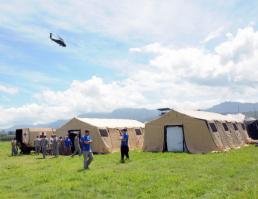
SOTO CANO AIR BASE, Honduras – In preparation for the 2014 hurricane season, the Joint Task Force-Bravo Medical Element (MEDEL) conducted a humanitarian assistance/disaster response (HADR) exercise June 12, 2014.
The MEDEL’s mission was to establish a forward medical treatment operation capable of providing triage, primary care, surgical capabilities, patient holding and evacuation.
Read The Article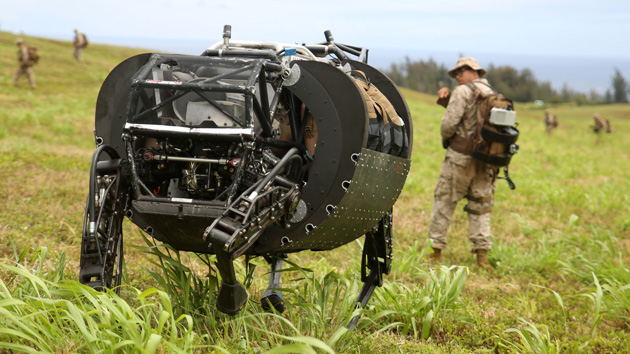
They grow up so fast, don't they? It seems like only yesterday that Boston Dynamics' AlphaDog (aka LS3) robot was finding its legs, and yet it has already gone out on training exercises with the US Marine Corps for the first time. The cargo-hauling machine dutifully trotted behind a Marine squad traversing a simulated combat zone in Hawaii, proving that it could both navigate rough terrain and resupply other platoons that would otherwise have to wait for an ATV.
Read The Article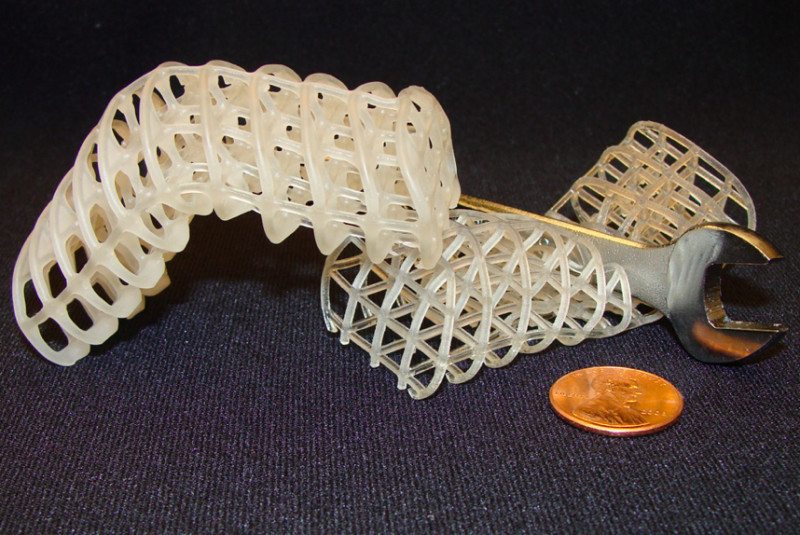
In the movie 'Terminator 2,' the shape-shifting T-1000 robot morphs into a liquid state to squeeze through tight spaces or to repair itself when harmed. Now a phase-changing material built from wax and foam, and capable of switching between hard and soft states, could allow even low-cost robots to perform the same feat.
Read The Article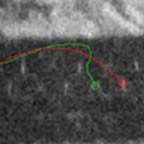
DARPA’s Extreme Accuracy Tasked Ordnance (EXACTO) program recently conducted the first successful live-fire tests demonstrating in-flight guidance of .50-caliber bullets. This video shows EXACTO rounds maneuvering in flight to hit targets that are offset from where the sniper rifle is aimed. EXACTO’s specially designed ammunition and real-time optical guidance system help track and direct projectiles to their targets by compensating for weather, wind, target movement and other factors that could impede successful hits.
Read The Article
DARPA has selected two universities to initially lead the agency’s Restoring Active Memory (RAM) program, which aims to develop and test wireless, implantable “neuroprosthetics” that can help servicemembers, veterans, and others overcome memory deficits incurred as a result of traumatic brain injury (TBI) or disease.
Read The Article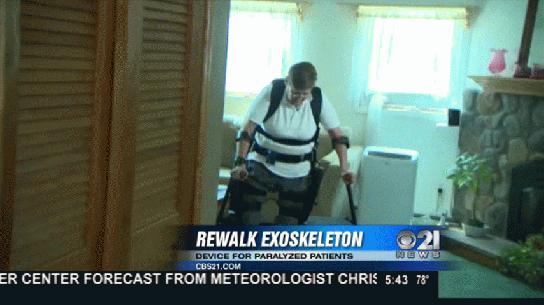
An autoimmune disease left retired U.S. Army sergeant Theresa Hannigan paralyzed three years ago, but now she can stand up and walk again, as the first patient in the country to use the wearable robotic exoskeleton ReWalk at home.
Read The Article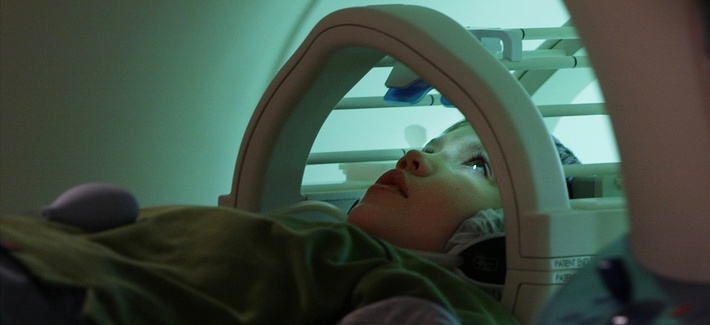
Scientists funded by the Defense Department have just announced a breakthrough that could allow researchers to create in 220 days an extremely detailed picture of the brain that previously would have taken 80 years of scans to complete.
Read The Article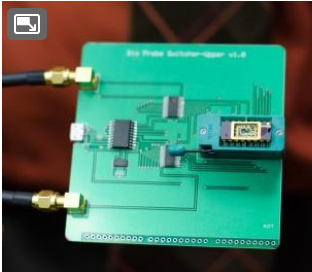
An NJIT research professor known for his cutting-edge work with carbon nanotubes is overseeing the manufacture of a prototype lab-on-a-chip that would someday enable a physician to detect disease or virus from just one drop of liquid, including blood. "Scalable nano-bioprobes with sub-cellular resolution for cell detection," , (Elsevier, Vol. 45), which will publish on July 15, 2013 but is available now online, describes how NJIT research professors Reginald Farrow and Alokik Kanwal, his former postdoctoral fellow, and their team have created a carbon nanotube-based device to noninvasively and quickly detect mobile single cells with the potential to maintain a high degree of spatial resolution.
Read The Article
WASHINGTON, June 24, 2013 – Over the last 12 years, many soldiers have returned from Iraq and Afghanistan with wounds, some visible and some not, a leader in Army Medicine said here June 22. Read The Article
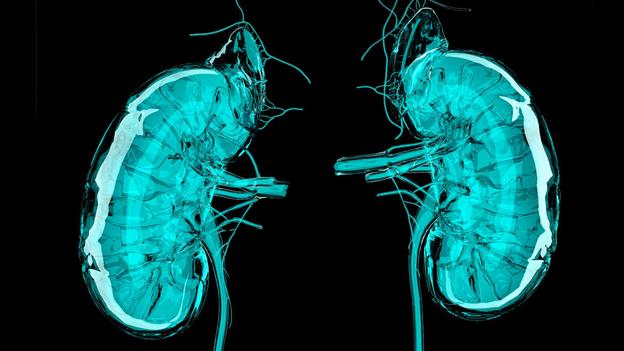
Surgeon Anthony Atala demonstrates an early-stage experiment that could someday solve the organ-donor problem: a 3D printer that uses living cells to output a transplantable kidney. Using similar technology, Dr. Atala's young patient Luke Massella received an engineered bladder 10 years ago; we meet him onstage. Talk recorded 3 March 2011.
Read The Article
Diamond Blackfan Anemia (DBA) is a rare pure red cell anemia resulting from a failure of the bone marrow to make red blood cells. The anemia may present in infancy, in childhood, or occasionally in adulthood. For some patients a genetic cause for DBA can be found but for others no known genetic mutation is known at this time. Some patients have little or no anemia after treatment with steroids, whereas others may need continuous red blood cell transfusions or steroid therapy for a long time, sometimes for life. Steroids may control DBA in many patients at first, but after some time, the steroids may not work as well anymore. Red cell transfusions have many possible negative side effects, such as iron overload. Iron overload can occur in the liver, heart, and endocrine organs which can cause more complicated health problems such as liver or heart failure, diabetes, thyroid issues, etc.
Read The Article
The Department of Defense has established the world’s first brain tissue repository to help researchers understand the underlying mechanisms of traumatic brain injury (TBI) in service members.
The announcement follows Secretary of Defense Chuck Hagel’s Symposium on Traumatic Brain Injury. Secretary Hagel convened a group of senior defense officials, experts in the medical field, and outside organizations to discuss advancements and areas of collaboration regarding traumatic brain injury.
Read The Article
ARLINGTON, Va., June 12, 2013 – Service members or anyone who bears the invisible scars of post-traumatic stress now have high-tech access to online resources to fight stress, depression and other psychological health concerns, a Defense Department official said here yesterday.
Read The Article
BETHESDA, Md., June 12, 2013 – Wounded warrior amputees at Walter Reed National Military Medical Center here got a chance here today to share the wisdom and experience they’ve gained through tough rehabilitation and prosthetic fittings with a man who lost a leg during the April 15 Boston Marathon bombings.
Read The Article